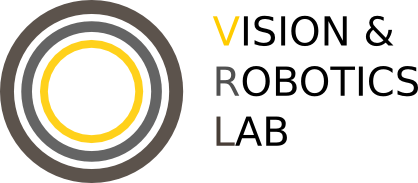Projects List
- Soft nonholonomic constraints: Theory and applications to optimal control
- Design and Modeling of a Novel Single-Actuator Differentially Driven Robot
- Depth estimation from edge and blur estimation
- Occlusion detection & handling in monocular SLAM
- Autonomous Underwater Vehicle for Monitoring of Maritime Pollution
- Teleoperation of UAV with Haptic Feedback
- Advanced Control Strategies for Unmanned Aerial Vehicles
- Ground Vehicles Driver Assistance and Active Safety Control Systems
- Pedestrian Detection
- Towards Fully Autonomous Self-Supervised Free Space Estimation
- Object-Oriented Structure from Motion
- Humanoid Fall Avoidance
Soft nonholonomic constraints: Theory and applications to optimal control
Determining the time-optimal trajectories for different robotic platforms is a fundamental problem in robotics, yet it has not been fully explored. To simplify the problem, researchers have opted to use kinematic models of motion. Even though this approach simplified the
characterization of optimal trajectories (in some cases exact analytical solutions were found), this came at the expense of feasibility of
such trajectories. To allow for more feasible trajectories, several researchers have attempted to employ dynamic models, yet these yield optimal control solutions that involve chattering; an infinite number of control switches within a finite amount of time. This problem
remains unsolved and is still under investigation.
In this research, we tackle the problem of chattering by modifying the motion model, and in particular the nonholonomic constraints describing the wheel-ground contact interactions. We propose to relax the constraints and allow for skidding in the model. The manner with which the constraints are relaxed allows for the optimal control problem to remain susceptible to analysis using Pontryagin’s Principle. We refer to these constraints as soft nonholonomic constraints. Results show that incorporating these constraints into the model rules out chattering solutions from the optimal control.
By: Salah Bazzi




